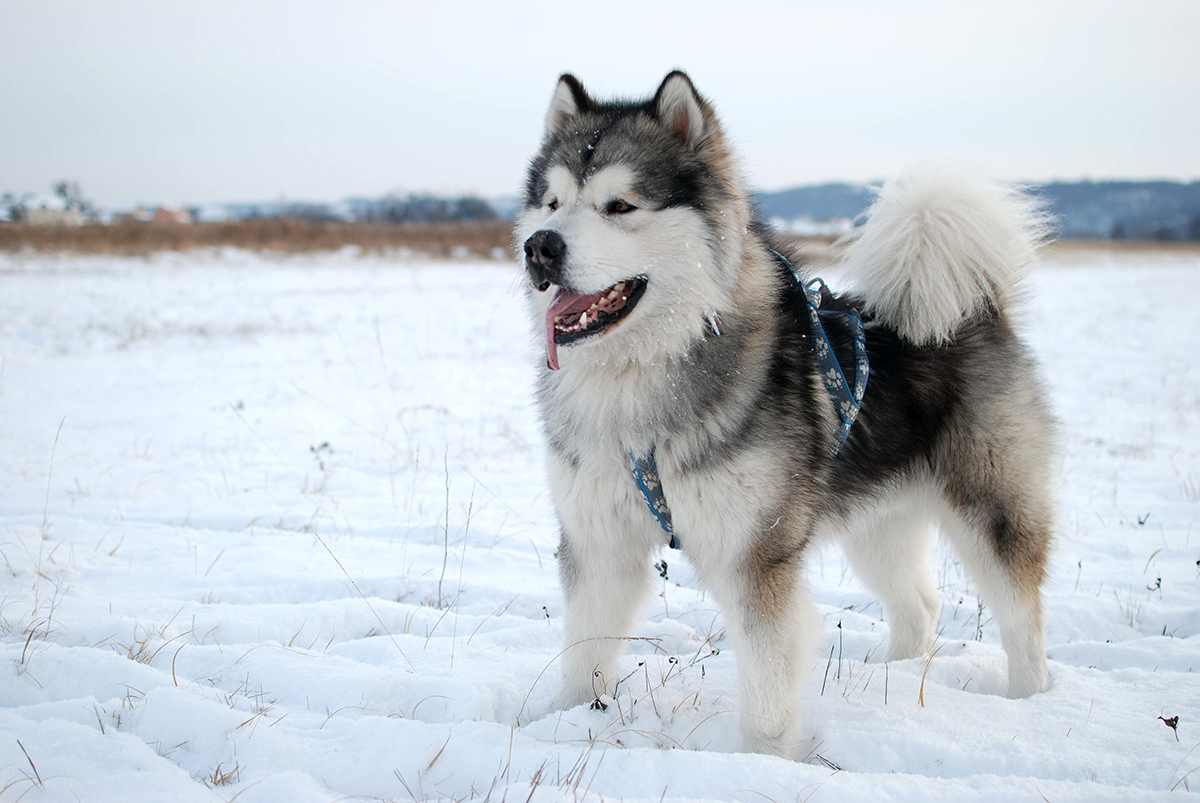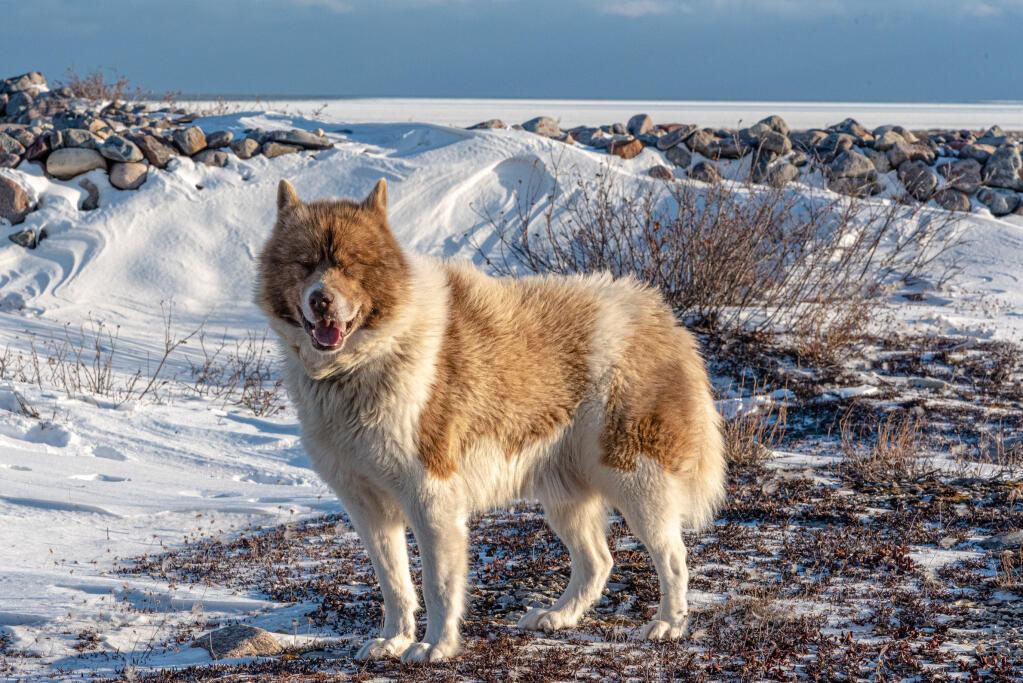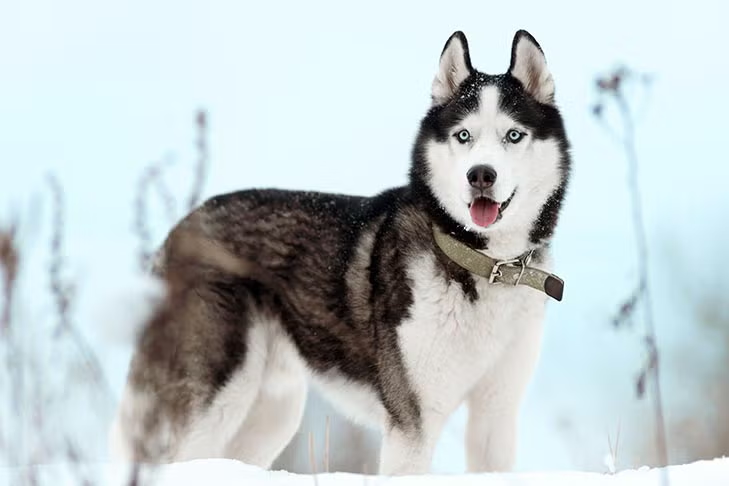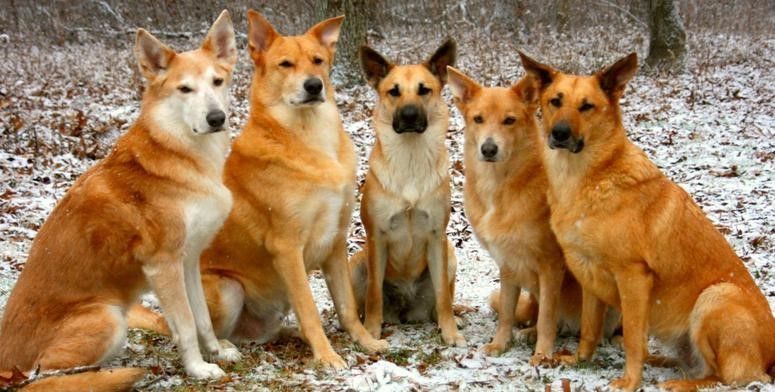CHAPTER 1: The White Cloud That Changed My Life
*Snow fell softly outside my window. It had been three months since David left, taking half our furniture and all my confidence with him. The apartment felt empty, hollow—just like me.*
*The doorbell rang. My sister Kate stood there with what looked like a moving cotton ball in her arms.*
*”This is Bella. She’s staying with you for the weekend while I’m at that conference.”*
*Before I could protest, the cotton ball—apparently a puppy—licked my face, and I felt something stir inside me. Something I hadn’t felt in months. Joy.*
*That weekend changed everything.*
—
That’s how my journey with Samoyeds began. Not with careful research or planning, but with an ambush puppy-sitting assignment that turned into a love affair spanning fifteen years, three Samoyeds, and countless moments of pure, uninhibited happiness.
And I’m not alone. Ask any Samoyed owner about their dog, and watch their face transform—eyes lighting up, smile widening—mirroring the famous “Sammie smile” that makes this breed so instantly recognizable.
But what is it about these fluffy white Arctic dogs that captures our hearts so completely? Is it just their teddy bear appearance, or something deeper? And more importantly—could a Samoyed be your next great love story?
Let’s find out.
CHAPTER 2: The Smile That Survived Siberia
*The wind howled across the tundra, temperatures plummeting to minus forty. Inside the skin tent, the Samoyede people huddled together with their dogs, sharing warmth and the day’s meager rations. Outside, wolves circled, hunting the reindeer herd that meant survival for the tribe. Come morning, the dogs would help drive them back, never faltering despite the brutal conditions.*
*This was life in Siberia for thousands of years—humans and dogs evolving together into perfect survival partners.*
—
It’s impossible to understand the Samoyed without appreciating its extraordinary heritage. These aren’t dogs manufactured for the show ring or designed as fashionable accessories. They’re living artifacts of one of humanity’s most ancient partnerships.
The name “Samoyed” comes from the Samoyede people (now known as the Nenetsky), nomadic reindeer herders who inhabited the harshest regions of Siberia. Archaeological evidence suggests that these dogs have remained virtually unchanged for over 3,000 years, making them one of the world’s oldest and most pure breeds.
DNA studies confirm this ancient lineage, showing Samoyeds are among just 14 “ancient” dog breeds with the closest genetic ties to wolves. While your friend’s designer doodle might be a modern invention, the Samoyed in your living room carries genes that helped humans survive the Ice Age.
These weren’t just pets. They were essential workers with multiple critical roles:
– **Herding reindeer:** Helping the Samoyede people manage their primary food source
– **Pulling sleds:** Transporting goods across vast frozen expanses
– **Hunting:** Assisting in tracking and capturing food
– **Protection:** Warning of wolves and bears that threatened the tribe
– **Warmth:** Sleeping with their humans to provide vital body heat in sub-zero temperatures
This working partnership shaped everything about the breed—from their physical attributes to their temperament. Their famous smile isn’t just adorable; it’s functional. The upturned corners of their mouth prevent drooling, which would freeze in Arctic conditions and cause frostbite.
Even their personality—friendly, gentle, and people-oriented—was selectively developed through thousands of years living in intimate quarters with humans. Dogs that couldn’t get along harmoniously inside a crowded tent during months-long winter storms simply didn’t survive to pass on their genes.
When explorers first encountered these remarkable dogs in the late 1800s, they were immediately impressed. Soon Samoyeds were accompanying European and American expeditions to both the North and South Poles, including Roald Amundsen’s 1911 conquest of the South Pole.
Though nearly extinct after World War II (with reportedly only about 30 registered individuals remaining), dedicated breeders managed to save this living treasure. Today’s Samoyeds carry the legacy of both their ancient Siberian heritage and the breed’s heroic contributions to polar exploration.
CHAPTER 3: The Architecture of Arctic Perfection
*The first time I bathed Bella, I was shocked. The mountain of white fluff shrunk to half its size when wet, revealing an elegantly proportioned, athletic dog beneath all that coat. As she dried, the transformation reversed—delicate features disappearing beneath the expanding cloud of fur until she once again resembled an animated snowdrift with eyes.*
—
The Samoyed’s appearance is the definition of form following function—a masterpiece of evolutionary design engineered for Arctic survival.
Let’s start with that iconic coat. It’s not just beautiful; it’s a technical marvel that would make outdoor gear companies jealous:
– **Double-layered:** A dense, woolly undercoat for insulation, with longer guard hairs forming a protective outer shell
– **Weather-resistant:** Natural oils that repel moisture and prevent ice from forming on the fur
– **Self-cleaning:** The texture naturally sheds dirt (though not loose hair—more on that later!)
– **Insulating:** Effective in both extreme cold AND heat, as it reflects sunlight and insulates against temperature changes
This is why you should NEVER shave a Samoyed, even in summer. That coat is their climate control system, and removing it can lead to sunburn, overheating (ironically), and permanent damage to the fur’s texture.
Beyond the coat, every aspect of their physical structure serves a purpose:
– **Sturdy, compact body:** Built for endurance rather than speed
– **Deep chest:** Provides lung capacity for sustained work in thin, cold air
– **Slightly upturned corners of mouth:** The famous “Samoyed smile” prevents drooling and frostbite
– **Almond-shaped eyes:** Less exposed surface area to protect from cold and blowing snow
– **Thick, curved tail:** Wraps over their back to cover their nose while sleeping in the snow
Their dimensions place them solidly in the medium-large category, with males standing 21-23.5 inches at the shoulder and weighing 45-65 pounds, while females are slightly smaller at 19-21 inches and 35-50 pounds.
The breed standard specifies a white, cream, or biscuit coat (white with light tan shadings), though pure white is what most people associate with the breed. Their eyes should be dark, providing striking contrast against their pale coat, and their nose, eye rims, and lips should be black to protect against snow blindness.
When you look at a Samoyed, you’re seeing thousands of years of selective breeding for survival in one of Earth’s most unforgiving environments. The fact that this functional design happens to create one of the world’s most beautiful dogs is just a happy bonus.
CHAPTER 4: Living With a Snow Cloud – The Samoyed Personality
*I was hosting a dinner party when the power went out. As my guests grumbled and fumbled for their phone flashlights, Bella trotted into the kitchen, grabbed her favorite toy, and dropped it at our feet, tail wagging enthusiastically. The message was clear: “Why is everyone sitting in the dark looking grumpy? This is the perfect time for games!”*
*As my friends laughed, the evening transformed from a ruined dinner to an impromptu party by candlelight. That’s the Samoyed effect—they find joy in everything and insist you join them.*
—
If I had to describe the Samoyed temperament in three words, they would be: joyful, social, and stubborn.
These dogs approach life with an infectious enthusiasm that’s hard to resist. While many breeds gradually mature into dignified adult behavior, Samoyeds retain their puppy-like playfulness well into old age. My 12-year-old Samoyed still prances around with her toys, inviting anyone and everyone to join in a game.
Their social nature cannot be overstated. Samoyeds were bred to live with their human families in close quarters, and they still demand to be part of everything you do. If you’re looking for an independent dog that’s content to be an outdoor pet or left alone for long periods, look elsewhere. Samoyeds need their people like they need air.
This sociability extends to strangers too. Don’t expect your Samoyed to be a guard dog—they’re more likely to welcome burglars with a wagging tail and a toy. Their friendly disposition makes them excellent therapy dogs and family pets, though it means they need careful supervision around wildlife or livestock, as they don’t naturally distinguish between friends and potential prey.
Their intelligence is substantial but comes with a healthy dose of independent thinking. Samoyeds understand what you want; they just sometimes have their own opinions about whether your request makes sense. This isn’t stupidity or willfulness—it’s the legacy of a working dog that sometimes had to make life-or-death decisions in extreme conditions.
Training requires patience, consistency, and creativity. Harsh methods will backfire spectacularly, resulting in a dog that shuts down or becomes even more stubborn. Positive reinforcement, especially when you can make training feel like a game, yields much better results.
Like most northern breeds, Samoyeds are vocal—but not typically excessive barkers. Their vocalizations range from soft “woofs” to full-throated howls, with an entire vocabulary of groans, mumbles, and the distinctive “Samoyed yodel” in between. They seem to genuinely attempt to communicate with their humans, often carrying on what sounds remarkably like a conversation.
Their energy level is high but manageable with proper exercise. A Samoyed that doesn’t get enough physical and mental stimulation will become destructive, with favorite activities including redesigning your garden into a lunar landscape of craters and converting your sofa into an art installation of exposed springs and foam.
Provide adequate exercise—at least an hour daily of walking, playing, or training—and most Samoyeds are surprisingly well-behaved indoors, content to lounge near their people once their activity needs are met.
CHAPTER 5: White Fur, White Furniture – Practical Considerations
*”It’s just a little seasonal shedding,” the breeder had said. Two weeks later, I was vacuuming three times daily, and still finding enough fur tumbleweeds under the furniture to create a life-sized replica of my dog. My black work clothes had become permanently frosted with white hairs, and I’d taken to keeping lint rollers in my car, office, purse, and every room of my house.*
*”Seasonal” apparently meant “whenever the season changes”—which, in my climate, was basically year-round.*
—
Let’s be brutally honest about the less glamorous aspects of Samoyed ownership. These magnificent dogs come with significant demands on your time, patience, and housekeeping standards.
### The Shedding Situation
The Samoyed coat is spectacular—and spectacularly high-maintenance. While they shed moderately year-round, they “blow their coat” twice annually, typically in spring and fall. During these periods, which last several weeks, the soft undercoat comes out in clumps that must be brushed away before they form painful mats.
Regular grooming is not optional with this breed. At minimum, plan for:
– Weekly brush-outs year-round (30-60 minutes each)
– Daily brushing during shedding seasons
– Occasional baths (every 1-3 months)
– Regular ear cleaning and nail trimming
I recommend investing in quality tools:
– An undercoat rake
– A slicker brush
– A pin brush
– A sturdy vacuum with excellent suction and specialized pet hair attachments
The upside? Samoyed fur is actually quite valuable. Traditionally used for spinning into wool-like yarn, “Samoyed wool” creates extraordinarily warm, lightweight garments. Some owners collect, clean, and sell their dog’s undercoat to specialty spinners.
### Exercise Requirements
Samoyeds were bred to run for miles pulling heavy loads. While they adapt well to family life, they still need significant exercise—both physical and mental—to prevent destructive behaviors.
Plan for:
– At least 60 minutes of dedicated exercise daily
– A mix of walking, running, playing, and training
– Additional mental stimulation through puzzle toys, training, or work-simulating activities
– Secure fencing if you have a yard (Samoyeds are notorious escape artists when bored)
In cold weather, your Samoyed will become especially energetic and playful. These are snow dogs at heart, and nothing delights them more than frolicking in a fresh snowfall. They’re particularly well-suited to winter sports like skijoring (being pulled on skis by your dog) or sledding.
### Health Considerations
Samoyeds are generally robust, with lifespans averaging 12-14 years. However, like all purebreds, they have some breed-specific health concerns, including:
– **Eye conditions:** Progressive retinal atrophy, cataracts, and glaucoma
– **Hip dysplasia:** A genetic malformation of the hip joint
– **Diabetes:** The breed has higher than average rates
– **Samoyed hereditary glomerulopathy:** A genetic kidney disease
– **Cardiac issues:** Including pulmonary stenosis
– **Autoimmune disorders:** Including uveodermatologic syndrome
Working with a reputable breeder who conducts appropriate health testing is crucial. Expect to budget for regular veterinary care, high-quality food, and potentially significant expenses if health issues arise.
### Climate Considerations
Despite their Arctic origins, Samoyeds can adapt to various climates with proper care. Their double coat insulates against both cold and heat, though extra precautions are needed in warmer regions:
– **Never shave their coat**, which protects them from sunburn and helps regulate body temperature
– Provide ample shade and water when outdoors
– Limit exercise to cooler parts of the day during hot weather
– Consider air conditioning during extremely hot weather
– Watch carefully for signs of overheating
In any climate, Samoyeds prefer to be indoors with their people rather than relegated to a backyard or kennel. Their social nature means they thrive as integrated family members with access to comfortable indoor living spaces.
CHAPTER 6: Finding Your Snowflake – Adopting a Samoyed
*The puppy interview was more rigorous than my last job application. The breeder quizzed me for two hours about everything from my work schedule to my vacuum cleaner model. She seemed particularly concerned about my fenced yard (was it tall enough?), my experience with dogs (had I researched the breed?), and my grooming commitment (did I understand the shedding?). Only after I’d satisfactorily answered her interrogation did she allow me to meet the puppies.*
*”They’re not for everyone,” she explained. “I need to know they’re going to the right homes.”*
—
If you’ve read this far and still feel the Samoyed might be your perfect match, the next question is: where and how do you find one?
### Breeders vs. Rescue
You have two primary options: purchasing from a breeder or adopting through rescue.
**Reputable breeders** typically:
– Health test their breeding stock for genetic conditions
– Raise puppies in a home environment with early socialization
– Provide health guarantees and lifetime support
– Carefully screen potential buyers
– Price puppies between $1,500-$3,500 (sometimes higher for show quality)
Finding a responsible breeder requires research. The Samoyed Club of America maintains a breeder referral list, and attending dog shows can be an excellent way to connect with experienced breeders.
**Rescue organizations** like Samoyed Rescue offer adult dogs that need rehoming. Advantages include:
– Lower initial cost (typically $300-600 adoption fee)
– Adult personality already developed, so fewer surprises
– Dogs are usually spayed/neutered and health-checked
– The satisfaction of providing a home to a dog in need
While purebred Samoyeds are less common in general shelters, they do appear occasionally, particularly in northern regions. Setting up alerts on pet adoption websites can help you find one.
### What to Look For
Whether choosing a puppy or adult dog, prioritize:
– **Health:** Clear eyes, clean ears, good energy levels, and proper documentation of health testing
– **Temperament:** Friendly, curious, not fearful or aggressive
– **Environment:** Clean, enriching surroundings whether breeder or rescue
– **Compatibility:** A personality and energy level that matches your lifestyle
For puppies specifically, good socialization between birth and 8 weeks is crucial. Puppies raised in isolated kennels without proper human interaction often develop behavioral problems later.
### Preparing for Your Samoyed
Before bringing home your white fluffball, prepare:
– **Supplies:** Quality food, appropriate grooming tools, secure crate, sturdy leash and harness
– **Environment:** Secure fencing if you have a yard, pet-proofing inside your home
– **Support network:** Trainer, veterinarian, possibly a dog walker or daycare for workdays
– **Knowledge:** Books, resources, and connections with other Samoyed owners
The Samoyed Club of America and various online Samoyed communities can provide breed-specific advice as you prepare for your new family member.
CHAPTER 7: The Smiling Legacy – Why Samoyeds Matter
*We walked along the snowy trail, Bella prancing ahead, her white coat almost invisible against the fresh powder except for her black eyes and nose. An elderly man approached from the opposite direction, hunched against the cold, eyes downcast.*
*Bella spotted him and bounded over, tail wagging, face alight with her unmistakable Samoyed smile. The man stopped, startled, then slowly knelt to pet her. As he rose, I noticed he was smiling too—the first genuine human smile I’d seen mirroring my dog’s perpetual joyful expression.*
*”Beautiful dog,” he said. “They always look so happy.”*
*”They make everyone around them happy too,” I replied.*
*He nodded knowingly. “We need more of that in the world.”*
—
In our technology-saturated lives, we’re increasingly disconnected from our evolutionary heritage—the natural world, physical work, and the ancient partnerships that shaped human civilization. The Samoyed represents one of our oldest and most successful alliances with another species.
When you bring a Samoyed into your life, you’re not just getting a pet. You’re connecting with thousands of years of human history, with the Arctic explorers who relied on these dogs to survive, with the Samoyede people who evolved alongside them in one of Earth’s harshest environments.
You’re also committing to preserve a living cultural and genetic treasure. The Samoyed today exists because people recognized its value and worked to save the breed when it nearly disappeared. Each responsible owner becomes part of that ongoing preservation effort.
But perhaps most importantly, you’re inviting joy into your life. In a world often marked by stress, division, and digital distraction, the Samoyed offers something increasingly rare: uncomplicated, unconditional happiness. Their smiling faces remind us daily to find pleasure in simple things—a snowfall, a game of fetch, the company of those we love.
Is the Samoyed right for you? Only you can answer that question. They’re not the easiest dogs to own, with their grooming needs, exercise requirements, and stubborn streaks. They’re not for neat freaks, workaholics, or those seeking a low-maintenance pet.
But for the right person—someone active, patient, home-centered, and willing to embrace both the challenges and the profound rewards—a Samoyed can transform a house into a home and a life into an adventure.
Just ask any Samoyed owner if they regret their choice. Through the fur tumbleweeds, the muddy paw prints, and the occasional destroyed flower bed, you’ll almost always get the same answer:
“Best decision I ever made.”
And they’ll probably be smiling when they say it—almost as widely as their dog.




